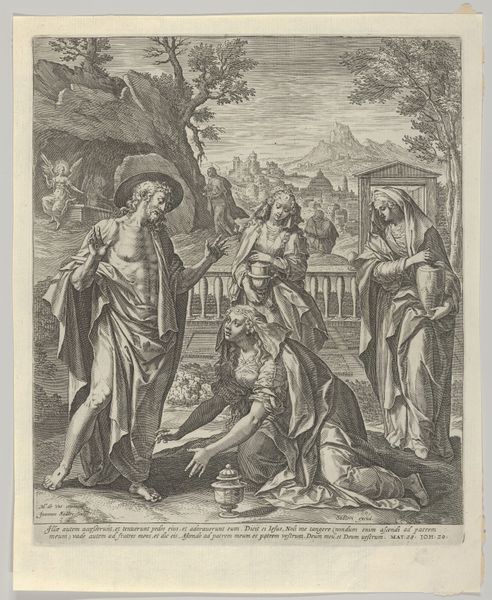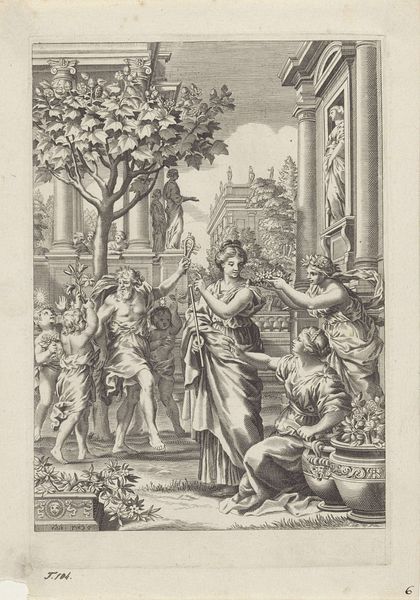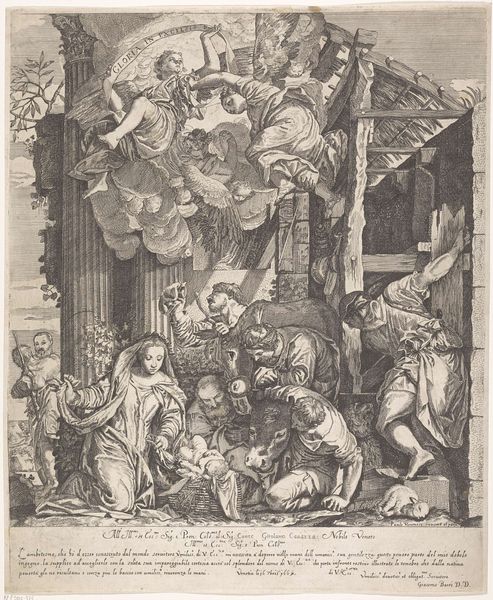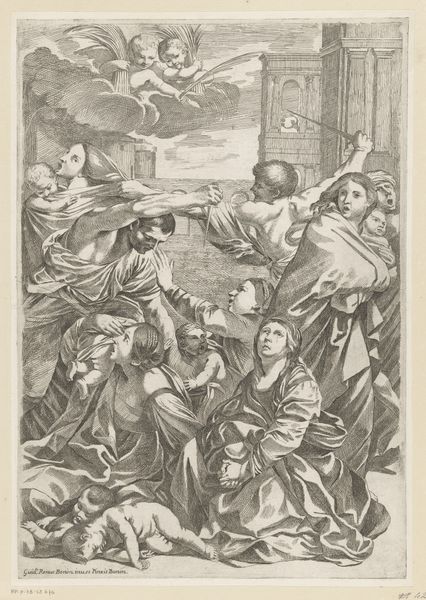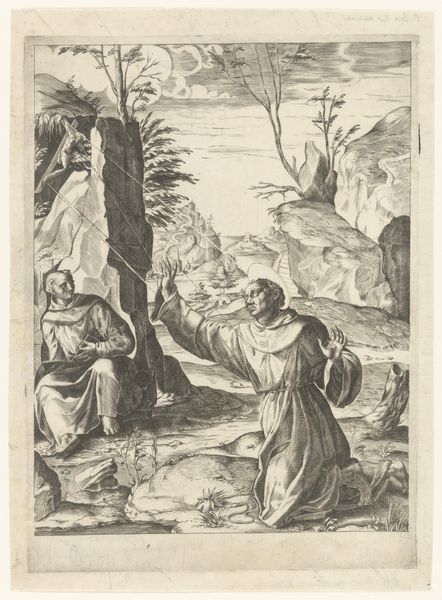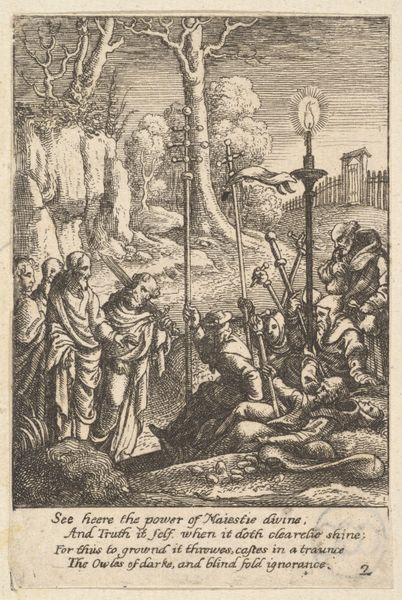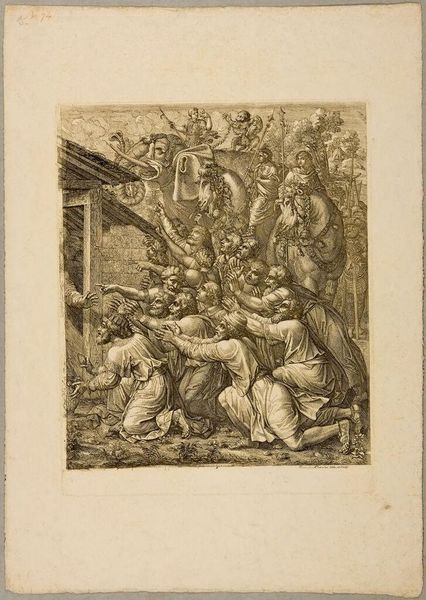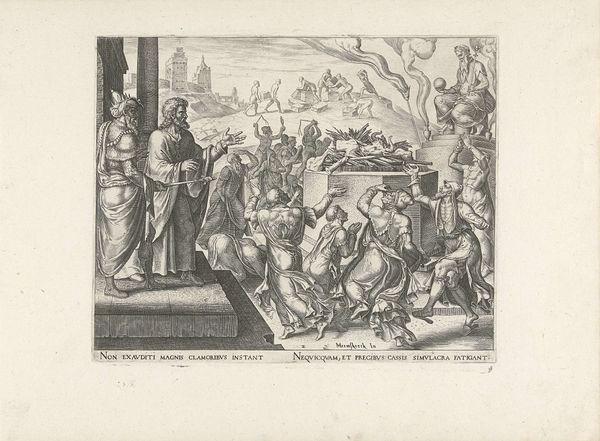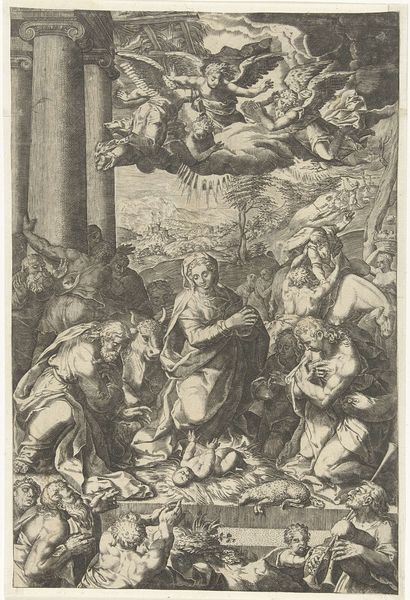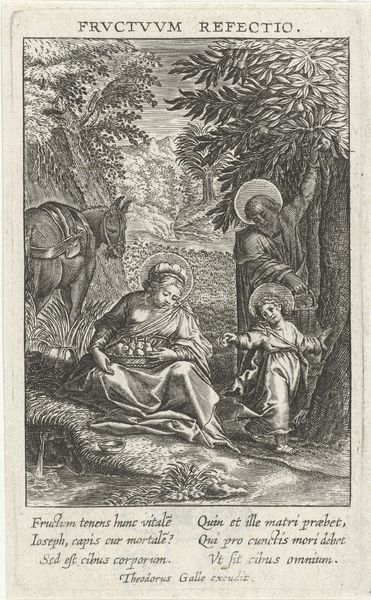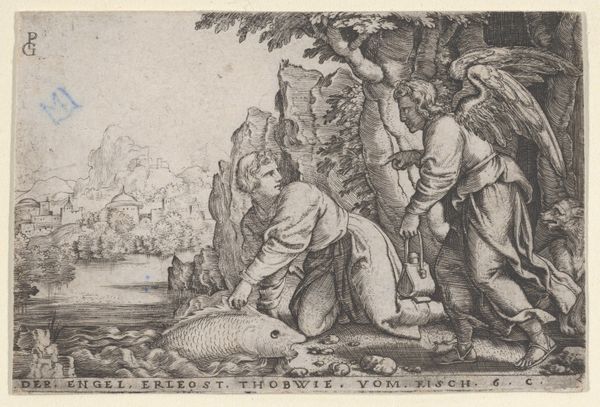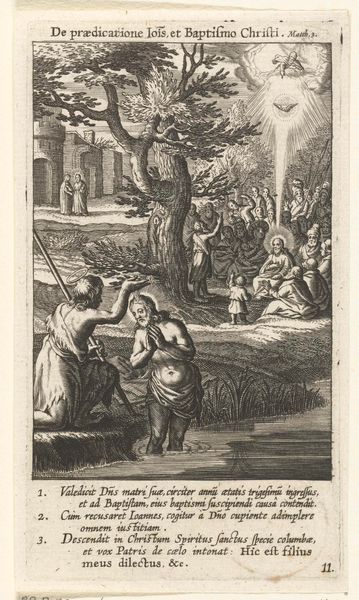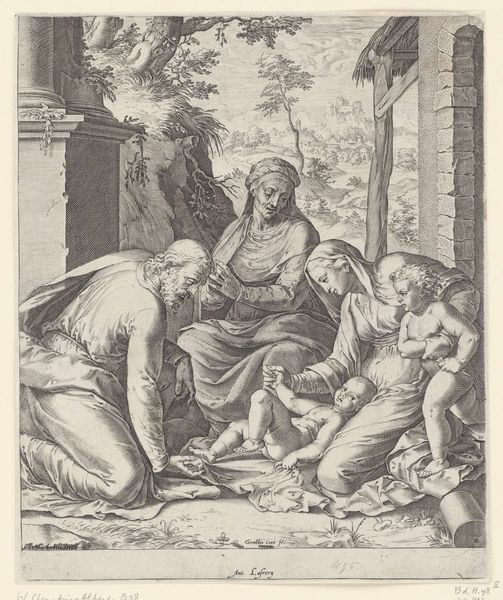
engraving
#
allegory
#
baroque
#
old engraving style
#
figuration
#
history-painting
#
engraving
Dimensions: height 214 mm, width 154 mm
Copyright: Rijks Museum: Open Domain
Editor: Here we have "Flora stung by a bee," an engraving from after 1633, currently held at the Rijksmuseum. It depicts a scene with classical figures, and the density of the engraving creates an almost dreamlike, feverish quality. What are your thoughts on this work? Curator: Well, I'm immediately drawn to the process of its creation. An engraving like this speaks volumes about the skilled labor involved. Each line meticulously etched into a metal plate… think of the time, the tooling, the workshops that supported this kind of production. And then, the distribution network – how many prints were made, and where did they end up? It's a testament to a complex system of artistic production and consumption. Editor: That’s interesting! I hadn't considered the sheer labor aspect. But beyond the technical skill, is there any interpretation regarding the subject matter, beyond it being a myth? Curator: Of course, we shouldn’t ignore the cultural context. Who was commissioning these engravings? Who was buying them, and what did they signify to that market? Allegories like this are a material display, accessible for interpretation. I see commentary about desire and pain intertwined within an elite audience of that period. Think of the symbolism embedded within the flora depicted – were these accessible to most people? Editor: I see what you mean; it is so much about accessing art's value. It encourages one to critically reflect on artistic creation itself! Curator: Exactly! We should appreciate the hand that crafted this and think about who wanted such skills to thrive in their day.
Comments
No comments
Be the first to comment and join the conversation on the ultimate creative platform.
